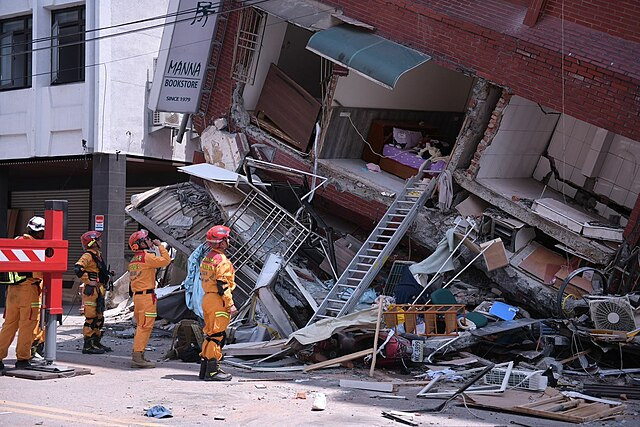The death toll from Taiwan's most powerful earthquake in 25 years has risen to 10, with more than 1,000 people injured and hundreds still trapped or out of contact, authorities reported on Thursday. The 7.4-magnitude temblor, which struck during the morning rush hour on Wednesday, triggered at least nine landslides, collapsed hillsides onto highways, and sent residents fleeing their homes in terror.
Rescuers searched Thursday for missing people and worked to reach the hundreds stranded by the quake, which sent boulders and mud tumbling down mountainsides, blocking roads and isolating communities. Taiwan's fire agency reported that about 690 people were either still trapped or out of contact, with most of those being hotel employees in the Taroko National Park, a popular tourist destination famous for its canyons and cliffs.
The earthquake set off tsunami warnings on the island and across neighboring countries, while more than 300 aftershocks have rattled the island since Wednesday morning, forcing "terrified" residents to sleep in tents outside their houses or in emergency shelters.
Liu Zhong-da, a 58-year-old construction worker, and his colleague were trapped inside a tunnel in the national park when the quake hit. "We almost got covered up," Liu said. "No communication could be made (to the outside world)." The two were rescued Thursday afternoon and received a quick medical checkup outside the park.
Authorities reported that about 60 workers who had been unable to leave a quarry due to damaged roads were also freed, while six workers from another quarry were airlifted out. Some 650 people remain cut off, the vast majority of them employees and guests at a hotel in the national park. Officials said they were safe and had food and water, and that work to repair the roads to the hotel was nearly finished.
In the city of Hualien, workers used an excavator to stabilize the base of a damaged building, as chickens pecked among potted plants on the flat roof slanting at a severe angle. Mayor Hsu Chen-wei previously said 48 residential buildings were damaged in the quake.
Hendri Sutrisno, a 30-year-old professor at Hualien Dong Hwa University, spent Wednesday night in a tent with his wife and baby, fearing aftershocks. "We ran out of the apartment and waited for four to five hours before we went up again to grab some important stuff such as our wallet. And then we're staying here ever since to assess the situation," he said.
The earthquake, measured at magnitude 7.4 by the U.S. Geological Survey, was the strongest to hit Taiwan since 1999, when a magnitude 7.7 temblor caused 2,400 deaths, injured around 100,000, and destroyed thousands of buildings.
Huang Shiao-en, who was in her apartment when the quake struck, described the experience: "At first the building was swinging side to side, and then it shook up and down."
The Central Weather Administration recorded more than 400 aftershocks from Wednesday morning into Thursday night, while the national legislature and sections of Taipei's main airport suffered minor damage.






